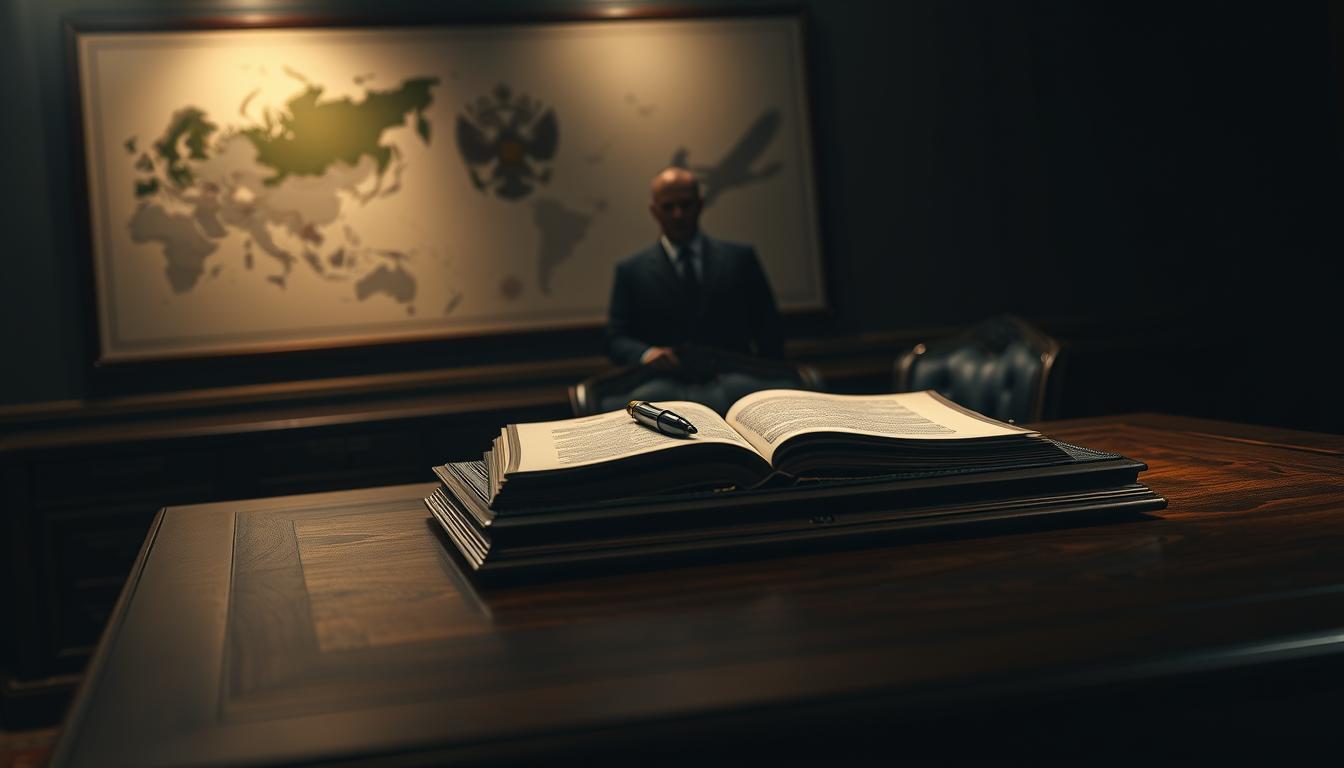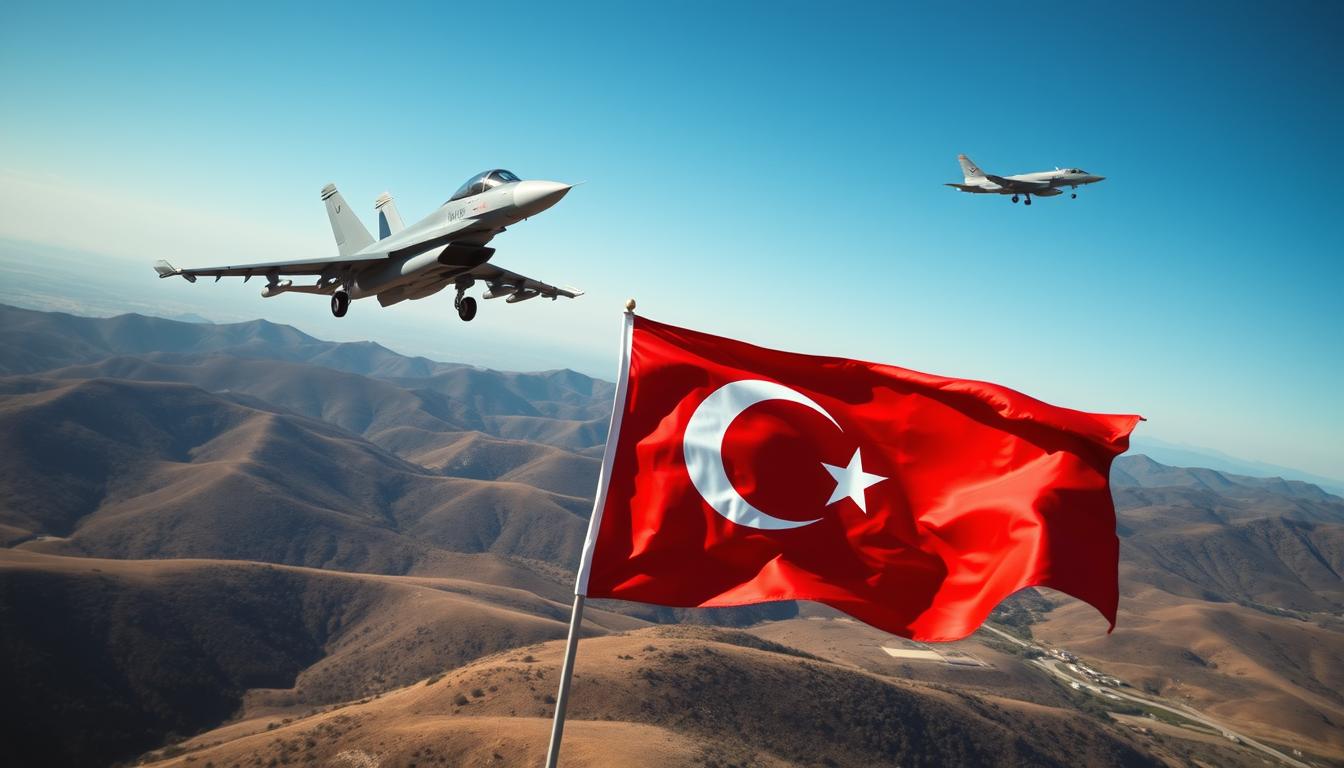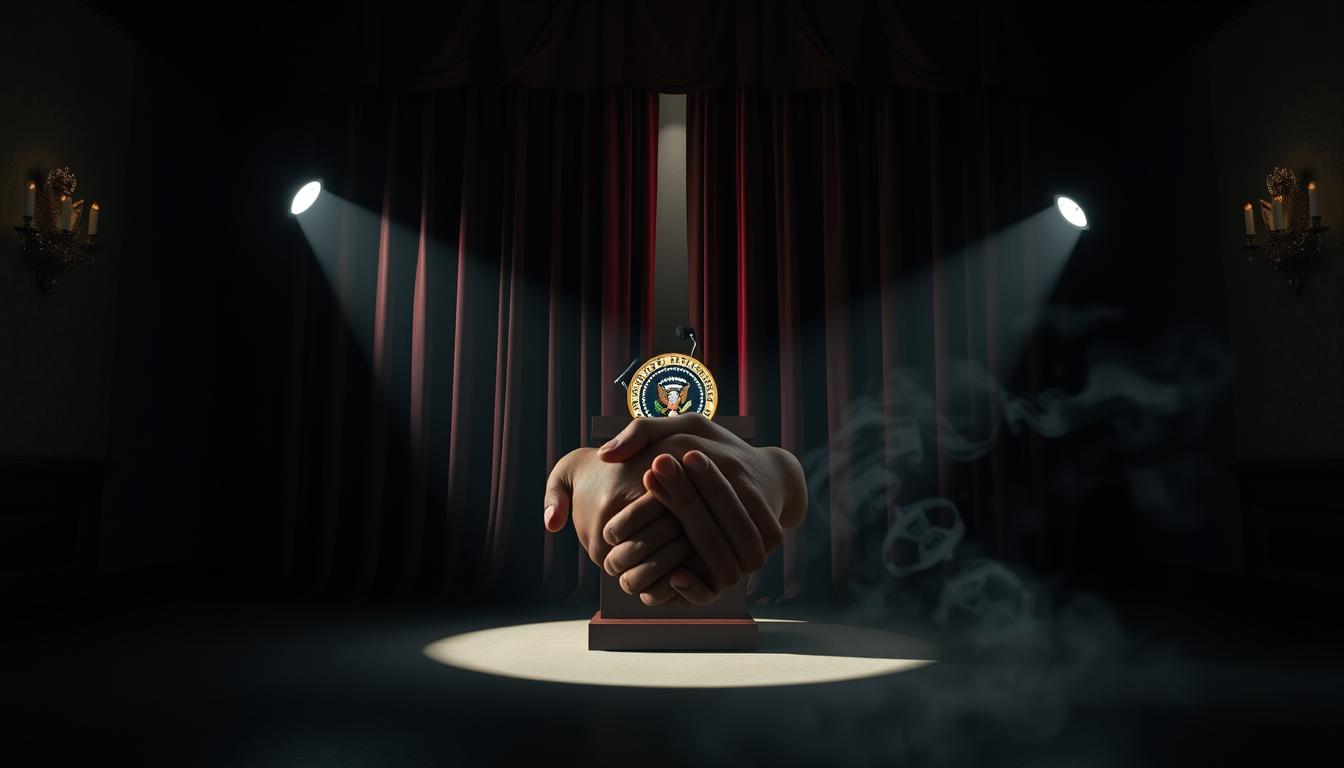President Vladimir Putin has made a big move for world safety. He signed a new plan for how Russia will react to attacks. This plan shows a big change in how Russia sees its role in the world.
It’s all about stopping NATO and Western countries from getting too close. This move is to make Russia’s military stronger. It’s because of the fight in Ukraine and other tensions.
This change is very important for Russia’s safety. It also affects how countries work together around the world.
Key Takeaways
- The revised doctrine emphasizes deterrence against perceived threats.
- Putin’s strategic policy signals Russia’s assertive military posture.
- The doctrine is a response to ongoing geopolitical tensions with NATO.
- This nuclear response revision could reshape international relations.
- Russia’s national security strategy is closely tied to the new doctrine.
- Potential implications for stability in Eastern Europe and beyond.
Understanding the New Nuclear Response Doctrine
Russia has changed its nuclear strategy. This new plan is important for keeping the country safe. It shows how Russia will use its nuclear power in a changing world.
Key Components of the Revised Doctrine
There are important parts to this new plan:
- First-use Policy: Russia might use nuclear weapons first to stop enemies.
- Conditions for Nuclear Engagement: There are rules for when to use nuclear weapons. This makes enemies think twice.
- Flexibility and Rapid Response: Russia wants to be quick and flexible. This helps them stay ahead in tough situations.
Historical Context of Russia’s Nuclear Policy
Russia’s nuclear policy has changed over time. It’s shaped by world events. Knowing this history helps us understand today’s plans.
| Time Period | Key Focus | Nuclear Deterrence Policy Impact |
|---|---|---|
| Cold War | Mutual Assured Destruction (MAD) | Created a way to keep enemies from attacking by threatening total destruction. |
| Post-Soviet Era | Strategic Arms Reduction | Moved towards reducing arms, but kept a strong nuclear force. |
| Modern Era | Increased Emphasis on Flexibility | Adapts to new threats while keeping nuclear power to protect interests. |
This history shows how past events and world changes have shaped Russia’s nuclear strategy. As the world keeps changing, so does Russia’s defense plan. It shows a smart way to protect the country.

Putin Signs Revised Doctrine for Nuclear Response if Russia is Attacked
President Putin has signed a new nuclear response doctrine. This change is big for world relations. It makes everyone worry about implications for global security.
The move could make NATO-Russia tensions worse. This is because of the changes in how Russia sees nuclear weapons.
Implications for Global Security
Russia is now more ready to use nuclear weapons. This could make the world more unstable. Experts think it might make it harder to solve problems peacefully.
It could also make NATO countries more alert. This could lead to more military actions. It makes finding peaceful solutions harder.
Reactions from NATO and the West
NATO and Western countries are very worried. They think this could start an arms race. NATO wants to strengthen its defenses because of Russia’s actions.
They say they need to work together. This could make Europe more dangerous. It could lead to big problems by mistake.
The Role of Nuclear Deterrence Policy in Moscow’s Strategy
Nuclear deterrence is key in Moscow’s military plan. It helps keep other countries from attacking Russia. By knowing this, we can understand how Russia works with other big countries.
How Deterrence Influences International Relations
Moscow’s plan is all about nuclear deterrence. This idea helps Russia deal with NATO, the U.S., and others. It makes countries think twice before attacking Russia.
This balance keeps the world in a delicate state. It makes countries think about Russia’s nuclear power when planning their own.
Comparison with Other Nuclear Powers
Other nuclear powers like the U.S. and China have their own ways. The U.S. focuses on missile defense, while Russia has a big and diverse nuclear arsenal. These choices affect global security in different ways.
| Nuclear Power | Deterrent Approach | Key Features |
|---|---|---|
| Moscow | Credible Threat | Large arsenal, emphasis on parity |
| United States | Advanced Defense Systems | Focus on strategic deterrence, missile defense |
| China | Minimum Deterrence | Growing capabilities, regional focus |
These strategies show how complex modern wars are. Each country’s plan changes based on Moscow’s moves and the world’s changing.

Escalation to De-Escalation Strategy Explained
The escalation to de-escalation strategy is key for Russia’s military plans. It uses a smart way to start small and then stop big conflicts. This helps Russia use its big guns wisely to solve problems.
Looking into this strategy helps us understand its big role in today’s world. It’s especially important when we see big fights happening.
Understanding the Strategy’s Framework
This strategy has a special way of reacting. It starts small and can stop big fights. It uses a little bit of military power to scare others without starting a big war.
Important parts include:
- Controlled Engagement: Starting small military actions to show power.
- Nuclear Deterrence: Using big guns to keep others from fighting back.
- Negotiated Outcomes: Trying to solve problems with talks and being ready to fight.
The Ukraine Conflict Impact on Military Strategy
The Ukraine fight has changed Russia’s military plans. It shows how military strategies change with local fights. Important points include:
- Increased Military Presence: Russia has more soldiers ready near borders.
- Tactical Adjustments: Russia changes its fight plans because of NATO and the West.
- Geopolitical Calculations: Russia makes big choices based on Ukraine’s new friends and land fights.
Conclusion
Putin’s nuclear doctrine has changed a lot. This change affects both local and global security. It shows Russia is ready to act in the current world situation.
It’s important to watch Russia’s military and policies closely. This change shows Russia is taking a strong stance. It could change how nuclear powers talk to each other.
Now, the world is trying to understand what this means. Talking openly is key. It helps avoid big problems and misunderstandings.
The future of Russia’s nuclear plans is not clear. But, it will surely affect the world’s safety and power balance.
We need to talk about nuclear policies more. These talks help make the world more stable and peaceful. By staying informed and watching these changes, we can make the world safer.












Leave a Reply